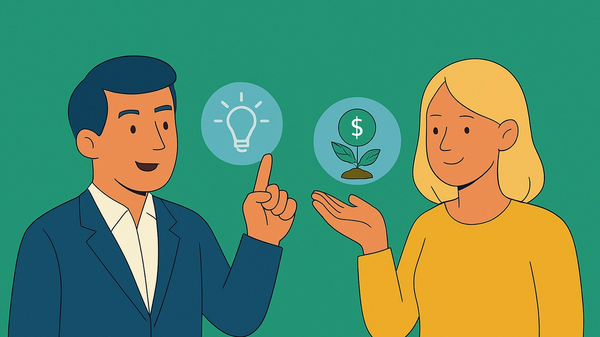The easy-to-understand explanation (even for complete beginners)
- Get the inside scoop on ETFs and see why they are the smart, cost-effective choice for your money
- Why ETFs are cheaper than mutual funds (and how ‘ordering off the menu’ can save you money)
- How to get better returns than most investment professionals, even if you’re brand-new to investing
Picture this: We’re at your fav cafe so you can ask me questions about investing.
As the official “money person” of all my friends, I’ve happily had this conversation more times than I can count!
I love talking about investing and helping people get started. The conversation goes like this…
“I’ve heard self-investing is the best way to save for retirement, but I have no idea how it works.
I know I have to pick stocks and it freaks me out. What if I pick the wrong ones and lose everything?”
Listen, I totally know the feeling.
It was the same for me when I started getting into self-investing!
I remember thinking,
“There’s no way I can manage my own investments! My advisor is licensed, he has so much experience, he knows what to pick - I won’t be able to figure it out.”
But honestly, this couldn’t be further from the truth.
With all the tools available now, it’s easy to invest - and you’ll likely get better returns than your advisor!
And you won’t ever need to pick individual stocks - you just need a few ETFs.
“What is an ETF?”
Ok, imagine you’re at a restaurant.
You have 2 options:
- You can order 1 thing off the menu, or
- You can choose the buffet and get a little bit of everything
We’ve all had that disappointing experience where we’ve ordered something and didn’t like it. It sucks, right?
Orrr you could have the buffet and get it all!
Trying to pick a stock is like ordering 1 thing off the menu. You only get that 1 company, and hopefully you pick the right one.
An ETF is a buffet that gives you a little of everything. You get a tiny piece of MANY companies!
You can get a sliver of the biggest companies in the world with just a few ETFs.
“Is an ETF like a mutual fund?”
When you get an ETF or mutual fund, you get a ‘bundle’ of companies instead of just one company (like the buffet example above).
But there are also key differences, and here’s one of the big ones:
ETFs are less expensive than mutual funds. And that means more money for you!
Mutual funds cost more because they are managed by a team of people who do research and pick stocks. Someone’s gotta pay for it!
The ETFs we’re talking about don’t need all that, so they cost less.
“Why do ETFs cost less than mutual funds?”
Good question!
So the other day I ordered pizza.
At first I chose the ‘build your own pizza’ option where I selected each topping individually. It came out to $70. Are you kidding me?!
Instead, I ordered a pizza off the menu for $35.
When you get an ETF, you “order off the menu” so it saves you money.
Unlike mutual funds that pay people to pick stocks, passively managed ETFs follow proven recipes.
“If someone isn’t picking what goes into an ETF, how does it work?”
So there are a few well-established groups of companies.
(These groups are known as an ‘index’)
For example, there’s a group of the 500 biggest companies in the US.
You know and use many of these companies, like Apple, Facebook, Google, Microsoft, and so on!
It’s cheap (and effective!) to buy an ETF that follows this group (known as the ‘S&P 500’) because the group already exists - nobody’s paid to put it together.
The ETF just follows this proven recipe of 500 companies!
ETFs that use these recipes are called ‘passively managed ETFs’, which is different from ‘actively managed’ funds where people pick what goes into them.
“What does ETF stand for?”
ETF is shorthand for ‘Exchange-Traded Fund’.
It’s called that because it’s a fund that trades on an exchange (like the Toronto Stock Exchange, the TSX) the same way a stock does.
The price of ETFs fluctuates throughout the day, unlike mutual funds which are only traded once a day after the market closes.
ETFs can be a mix of different investments like stocks, bonds, and real estate.
“What’s better to invest in, ETFs or mutual funds?”
So it sounds like mutual funds would be better since there are all those people working on it, right?
But the truth is, actively managed funds fall short compared to passively managed ETFs about 80% of the time.
Here’s a glimpse of Bankrate’s synopsis of mutual funds VS ETFs:
“Overall, ETFs hold an edge because they tend to use passive investing more often and have some tax advantages.”
Between their proven track record, affordable cost, and ease of investing, passive ETFs are a great choice for basically everyone.
We’re cooking up more content to help you invest!
All this talk about pizza and buffets has me hungry, so I’ll sign off for now.
If you’re hungry for more tips to start investing, click here to join our free monthly newsletter that gives you simple strategies to invest your way to financial freedom!
And if you can’t wait, you can get a headstart on your investing journey by opening accounts with Questrade and Passiv!


